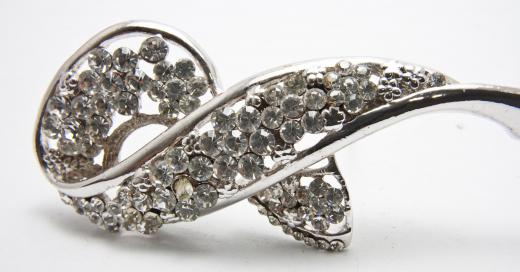Jewelry casting is the process of creating a model pattern on wax. This wax mold is then used to hold hot metal to shape it into uniform items based on the model. Lost wax casting, as the procedure is often called, dates back to dentistry in the early 1900s. It stemmed from dental casting to become a method used to create jewelry pieces such as rings, pendants and charms. Interestingly, many jewelry artists today still use dental tools to add detailed features to their cast pieces.
A jewelry artist first perfects the model metal piece to be cast. Alternatively, after sketching out ideas for a metal pendant, earrings, ring, brooch or other piece, a jewelry artist then sculpts a likeness of the sketch from green jeweler's wax. The model must be well-formed without pits or cracks, or the resulting jewelry casting will not be successful.

The model jewelery item is often covered with heated, pressurized rubber. The rubber coating must be removed carefully from the model metal piece so it can be filled with wax. The wax may be injected into the hollow rubber. If the rubber isn't taken off with care, it may leave lines that will show in the resulting wax mold.
In order to be ready for use, the wax mold is set in a material similar to plaster before being heated or boiled. Other dry ingredients may also be added to the plaster-like compound with everything being mixed with water to achieve the desired consistency. The heated, finished wax mold can then be used repeatedly for jewelry casting. This lost wax, or investment, casting technique is popular with jewelry artists, as it allows for great detail to show up in the completed metal designs. Whatever will show up in a wax model is typically going to appear in the pieces cast from its mold.
Different types of metals such as gold and sterling silver may be used in most lost wax molds. Lost wax casting techniques may be used to create jewelry with even, or symmetrical, shapes, such as rings with continuous, round bands, or more irregular, or asymmetrical, pieces including pendants curved at one end and angled at the other. Textured details that include even the tiniest dots, dents or other features are usually extremely pronounced in jewelry casting techniques. With the combination of limitless shapes and endless details, the possible fine jewelry designs that can be created with lost wax casting techniques are limited only by the artist.
